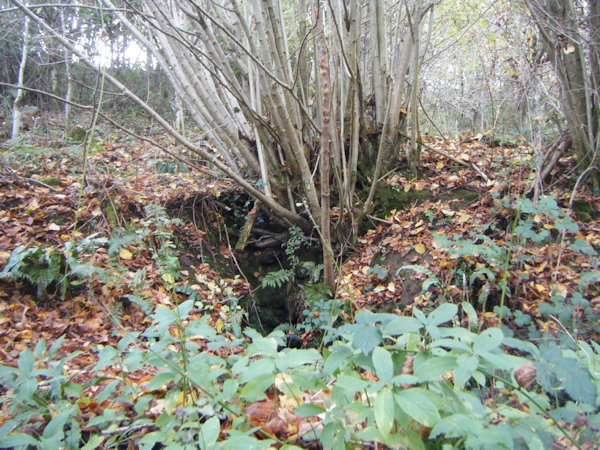 |
Dedication: Saint John the Baptist Location: Southstone Rock Coordinates: 52.27289N, -2.42855W Grid reference: SO708639 Heritage designation: none |
HOME - ENGLAND - WORCESTERSHIRE
 |
Dedication: Saint John the Baptist Location: Southstone Rock Coordinates: 52.27289N, -2.42855W Grid reference: SO708639 Heritage designation: none |
The first known mention of a St John's Well near Southstone Rock appears in Thomas Habington of Hindlip's Survey of Worcestershire, which Habington wrote in the early 17th century. His work was only published in the late 19th century because of the Civil War, which prevented Habington from publishing it himself in the 1640s. Habington refers to the well in a section of his work that is entitled "St. John of South Stone":
|
In thys paryshe of Stanford, about a myle Southe from the Churche, is a Rocke called Southstone, raysed on a steepe ascent in the bosome of greate hylles, which mountyng alofte overtop itt. Within thys rocke are some roames hewed out of the hard stone, and dedicated in forepassed ages to St. John the Baptist, on the feast of whose Natiuity heere was a solemme Offeringe, which ended, the Assembly ascended hence by a stayre cut out of the Rocke into a littell chappell buylded over all, wheare, fynishinge theyre devotions, they vsually drouncke of a pleasant well springinge by, whyc Cell, Chappell and Fountayn weare all intituled St. John of Southstone. Not vnlike (thoughe somewhat lesse) to the Hermitage of Redstone in Arley's parish, which is hewed out of a hyghered rocke which overlookethe Seuern. |
There is only one spring in the vicinity of Southstone Rock, and it still exists today; this must be the spring that Habington spoke of. Evidently, the spring was venerated as part of a local tradition before the Reformation. A History of the County of Worcester: Volume 4, which was published in 1924, also makes reference to the well:
|
SOUTHSTONE (Suleston, Sulstan, Sullestona, Solughston, Sulston, Soulston) with a carucate of land was given to the abbey of Evesham by Hugh son of Roger, of the inheritance of his wife Margery, at her request. This grant was evidently made before 1206 when the infirmarer of the abbey was receiving half a mark from Southstone. In 1353 the abbot and convent proved before the bishop their right to receive offerings at the image of St. John Baptist in Southstone chapel. These offerings were made at the feast of St. John Baptist at a service ending with the drinking of water from the famous well of the rock, and were valued at 40s. in 1535. |
The chapel and well certainly had links to Evesham Abbey. Presumably the hermitage, which once stood somewhere on or inside the rock formation, also had something to do with the Abbey. A "half-mark" was equivalent to six shillings and eight pence, which is equal to around £250 in today's money. It is clear that the abbey benefitted from the money that they received from the chapel and well at Southstone; the 40 shillings that were received in 1350 is equivalent to around £1,200 today.
In addition to the local tradition of visiting the well on St John the Baptist's day (June 24) after a service in the now non-existant chapel, the well was also regarded as having healing powers by local people. It does not, however, appear that the spring was supposed to be especially good for curing one specific ailment.
Today, what must once have been St John's Well is a powerful spring that issues out of the hillside beneath a large tree (not a yew) about twenty or thirty metres south of Southstone Rock. There is possible evidence of a construction around the spring, though that is not definite. Although the hillside was extremely overgrown when I visited in November 2024, it has only recently become a forested area, so access would once have been much easier.
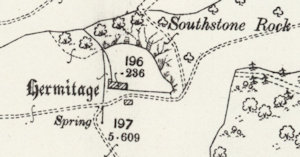 |
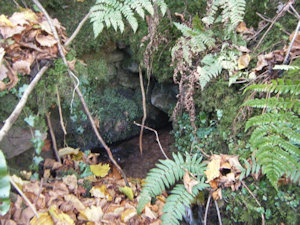 |
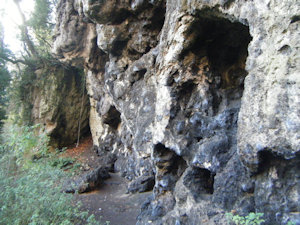 |
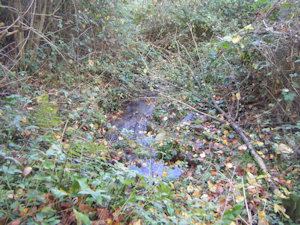 |
|
Access: The spring is located beside a public footpath, although it is very muddy in winter and is likely extremely overgrown at all times of year. |
Images:
Old OS maps are reproduced with the permission of the National Library of Scotland
Copyright 2025 britishholywells.co.uk